Unique Apple Varieties & Recipes
Diversivore periodically launches thematic features focusing on food culture, recipes, cuisines, and interesting ingredients. This feature is dedicated to exploring the diversity and complexity of apples, with a special focus on lesser-known varieties and recipes that use them. You'll find a mix of heirlooms, new and old hybrids, and information about finding and enjoying them. These varieties are generally bought and tested here in Vancouver, Canada, but many of them are available across North America and, in some cases, Europe, Asia, and Australia.
This feature will continue to update whenever I can get my hands on new apples (and/or come up with new recipes!), so keep coming back for updates and recipes related to this theme, or subscribe to make sure you don't miss out on anything new!
How Do You Like Them Apples?
Varieties
Ashmead's Kernel
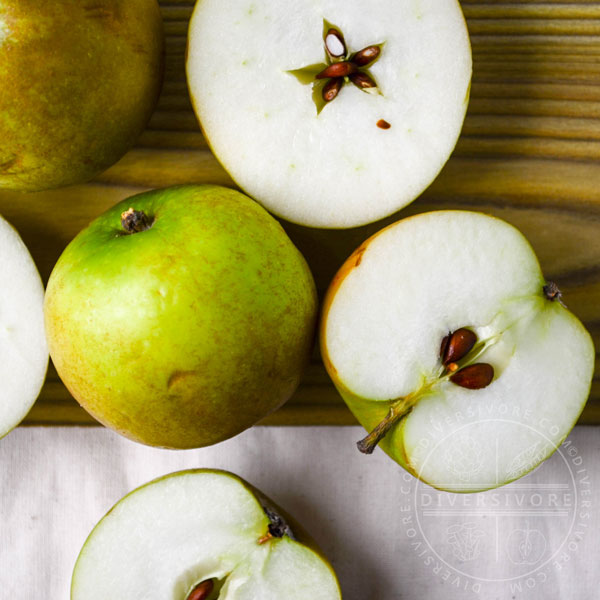
Category: Heirloom
Origin: England (early 18th Century)
In my opinion, Ashmead's Kernel might be the perfect representation of the problems with modern apple production (and why we should take steps to change the way we grow and buy fruit). Taste is personal of course, but these are easily one of my all-time favourite apples. They've got a great sweet/tart balance, with firm, crisp flesh. They're a wonderful dual-purpose apple, meaning that they're wonderful both for eating and cooking. So why aren't they more popular?
Ashmead's Kernel was once a rather popular apple, but they're not well-suited to intensive, large-scale cultivation or distribution. They're small, which means they're more work to peel or core, making them less attractive for baking or cooking with. And speaking of attractive, while they have a beautiful juicy white flesh (as you can see above), they're not particularly attractive on the outside - at least by contemporary apple standards. Yellow and/or green apples are already a tough sell in grocery stores, and Ashmead's Kernel has the added problem of being a russet apple, meaning that its skin is either entirely or partly mottled brown. While russet skin has absolutely no bearing on flavour, it's a trait that has become rather unappealing to modern apple consumers. The trees themselves are somewhat more susceptible to bitter pit (a cosmetic and quality-affecting disease caused by low calcium levels) and fire blight (a bacterial infection that affects and can kill plants in the rose family). Finally, Ashmead's Kernel is a triploid variety (i.e. it has three copies of every chromosome), making it a poor pollinator. These growing factors are found in many apple varieties, and while it doesn't mean that the trees are delicate (after all, they've survived just fine for over 300 years), it does make them less attractive to commercial apple growers. In essence, Ashmead's Kernel is the polar opposite of a modern Red Delicious apple, which is big, beautiful, and easy-to-grow, yet insipid and mealy. I think you can guess which one I would choose pretty easily.
Ashmead's Kernel is one of a relatively small number of European apple varieties that does well in North America. It tends to show up mid-to-late in the season, and stores well for three months or longer. While it's unlikely to be found in grocery stores, it's worth searching for at farmer's markets and small orchard operations.
Ashmead's Kernel
Recipes
Dewberry and Apple Puff Pastry Tarts
Simple, rustic, delicious little tarts made (ideally) with pure-butter puff pastry. This recipe uses a bunch of ingredients with special significance in my life, but it's also easy to adapt to the fruits you might have on hand.
Can't find Ashmead's Kernel? Try this with any firm, sweet apple with a bold flavour and a bit of acidity.
Belle de Boskoop
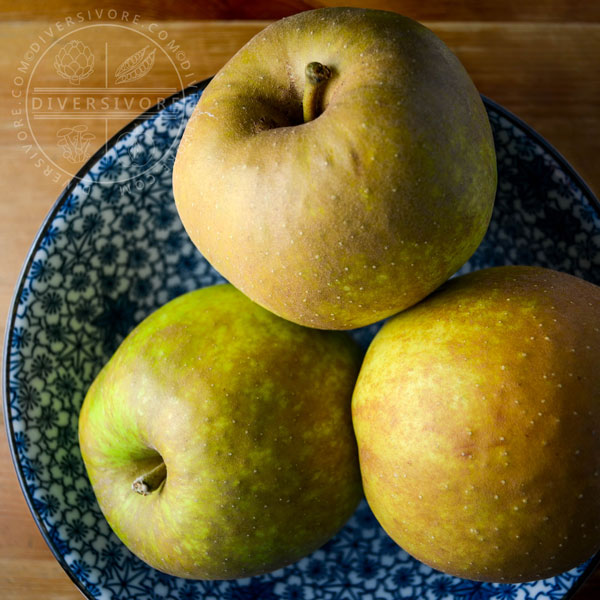
Category: Heirloom
Origin: Netherlands (1856)
This very large, crisp, russet apple is a fantastic dual-purpose variety, though I personally think it really shines in cooking and baking. They've got a very nice sharp, sweetly-acidic flavour when fresh, with a lot more tangy 'bite' than the average sweet apple, but they're nothing near what you'd find in a Granny Smith. This sweet/sour character coupled with their large-to-very-large size makes them fantastic for baking and cooking. Apple desserts that use Belle de Boskoops have a good amount of natural sweetness while still benefiting from the tart, sour-apple flavour that one usually gets with something like a Granny Smith. They also hold their shape quite well when cooked, making them ideal for cakes and pies. Given the option, these would probably be my go-to apple for any baking project.
Belle de Boskoops are one of a relatively small number of European apples that manages to do pretty well in the more temperate parts of North America. They can be a little tricky to spot, as they're rather visually variable. The base colour can be yellow to greenish, usually with a variable red-blush and with variable amounts of russet on the skin. The ones pictured above are rather green - some red and yellow colouring is more typical. Belle de Boskoop is a late-season apple that benefits from being stored for a little while. They're also excellent storage apples, and will keep very well for up to 6 months in a humid refrigerator.
Belle de Boskoop
Recipes
Swedish Apple Cake
A delicious apple and almond cake with vanilla and spices, plus an amazing pastry crust, topped off (literally) with a spectacular vanilla sauce that will leave you wanting to lick your plate clean.
Mutsu
(Crispin)
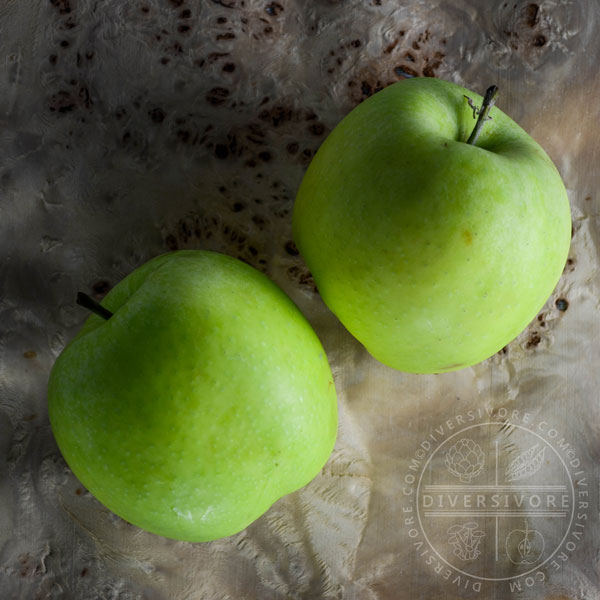
Category: Hybrid (Indo × Golden Delicious)
Origin: Japan (1930 [Developed], 1948 [Released])
Yellow and green apples have a hard time competing against red and red-blushed apples, but this large, beautiful, flavourful apple has managed to hold its own fairly well in recent years. In the USA, where these apples are sold under the name Crispin, they're among the 20 or so most popular varieties in the country. While this popularity makes them easier to find than some of the other apples on this list, they warrant inclusion here because of their spectacular multi-purpose flavour and texture. Sharp, sweet, and a little sour, they're juicy and excellent for eating, juicing, cooking, and drying.
Mutsu/Crispin apples are a late-season specialty, and they only store well for about 3 months. The large, vibrant green or yellow-green fruits often have some brownish russet colouring around the stem and shoulders (the ones shown above do not). Keep an eye out for them at farmer's markets and well-stocked grocery stores. One of my personal favourites. If this was a red apple, you can bet it would be one of the most popular apples in the world.
Mutsu (Crispin)
Recipes
Baked Brie with Apple, Walnut, Caraway, & Honey
Can't forget about apples and cheese! This one's simple, but unique and tasty. Apples play a starring role, but caraway, walnuts, and honey round things out in a distinctive and unforgettable way.
Pink Pearl
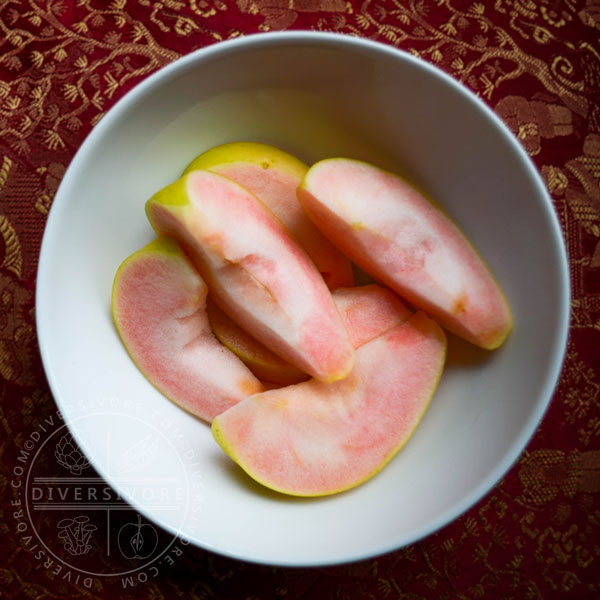
Category: Applecrab/Hybrid (Surprise ×)
Origin: USA (1944)
On the outside, the Pink Pearl looks a little unremarkable. Cut into one however, and you see an absolute show-stopper.
Pink Pearls are, unsurprisingly, notable for their distinctively pink flesh. The colour you see in the photo is not enhanced - they really area pink apple. Pink Pearls are descended from another pink apple called Surprise, which in turn is the result of crossing a standard domestic apple with the bold, ruby-fleshed Asian crabapple known as Niedzwetsky's Apple (Malus niedzwetskyana). This makes the Pink Pearl one of the delightfully named 'applecrabs,' or domestic apples with a degree of crabapple parentage.
Pink Pearls are said to have a finer flavour than their Surprise parent. They're a sweet/tart apple with a nice, perfumed character (some suggest that the fruit has a subtle raspberry flavour). They can be a little bit mealy, but not overwhelmingly so. They have a fairly short season, arriving early in the fall and lasting for a few months at most. Pink Pearls were developed in California, and tend to grow best up and down the Pacific Coast (up to and including British Columbia).
The Pink Pearl's exceptional colour is obviously worth showcasing, and makes for beautiful sauces, juices, and desserts. Because they're relatively tart, they're a good apple for both sweet and savoury applications. They do become fairly soft when cooked, so don't expect them to hold their shape terribly well.
Pink Pearl
Recipes
Pink Pearl Apples with Charcuterie
When you've got beautiful apples, sometimes simple is best. This is all about some of the finer, simpler things in life - like bresaola, manchego, and smoke salmon.
Pork Neck Steaks with Apple, Sage Brown Butter & Roasted Radishes
That's right, TWO Pink Pearl Recipe! Pork and apples are great together, but this simple-yet-elegant take on that classic pairing brings a whole lot more to the table.
How Do You Like Them Apples?
References & Further Reading
- Orange Pippin - https://www.orangepippin.com/ - a spectacular resource, characterizing many of the features, flavours, availability, and ratings for an ever-growing number of apple varieties from around the world.
- Saltspring Apple Company - https://www.saltspringapplecompany.com - A wonderful apple orchard with 333(!) varieties. Because they're near me, they're also a wealth of information on local availability and growing conditions.
Variety-specific Notes and References
In addition to individual varietal entries on Orange Pippin (see above), supplemental information came from the following sources, and sources contained within them.
Ashmead's Kernel - Wikipedia
Pink Pearl Apples - Wikipedia - see also the section on Niedzwetsky's Apple.


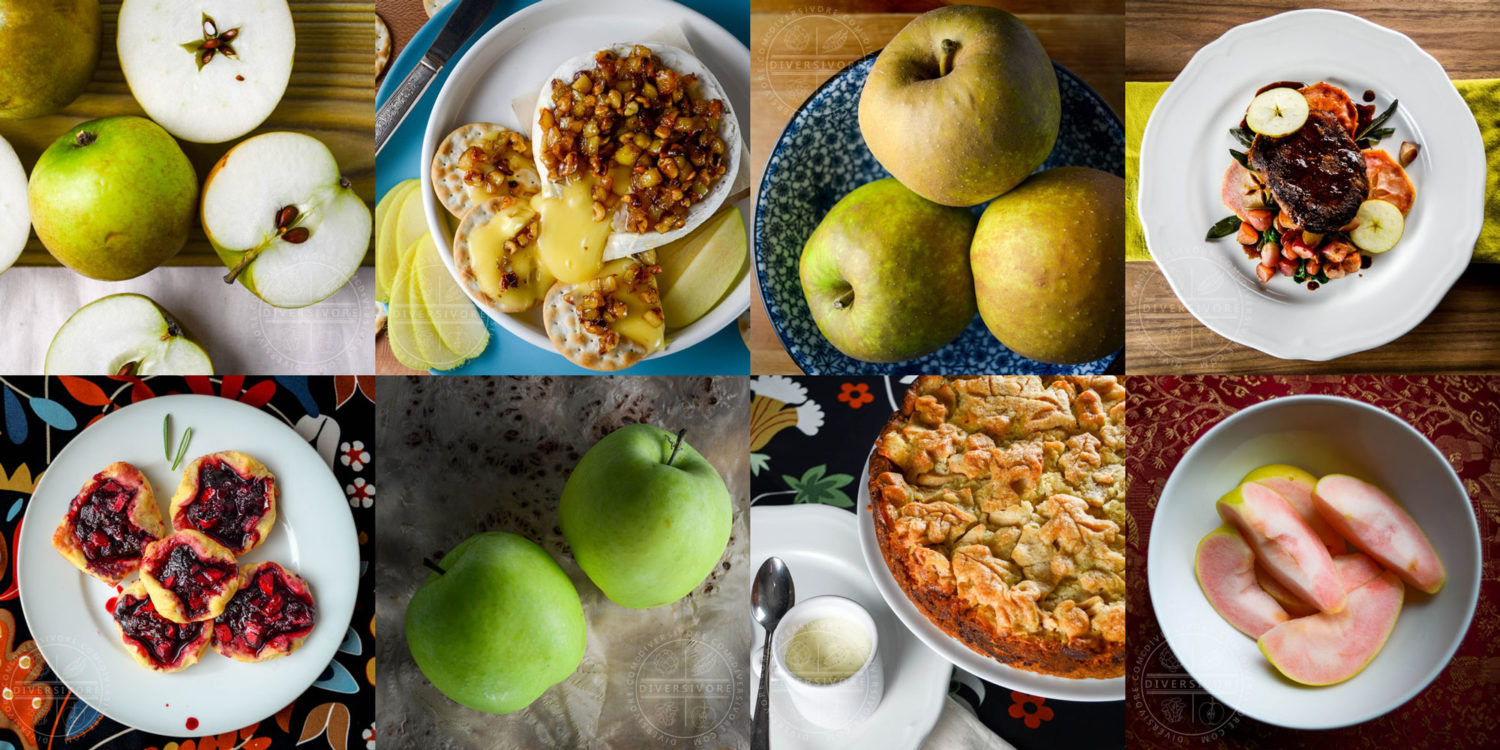
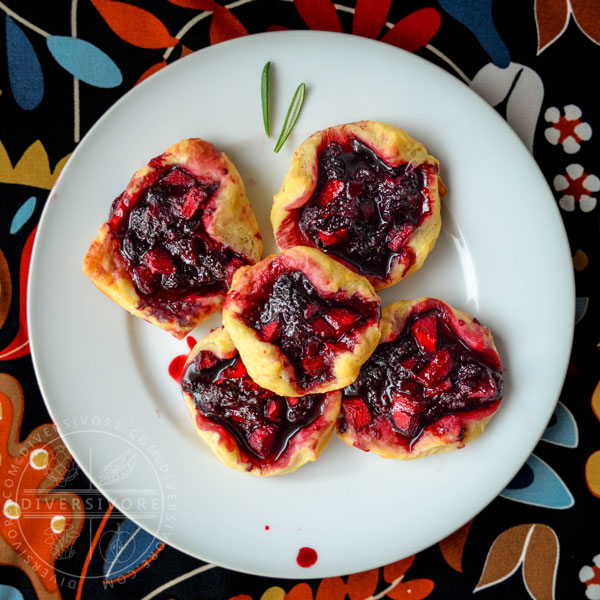
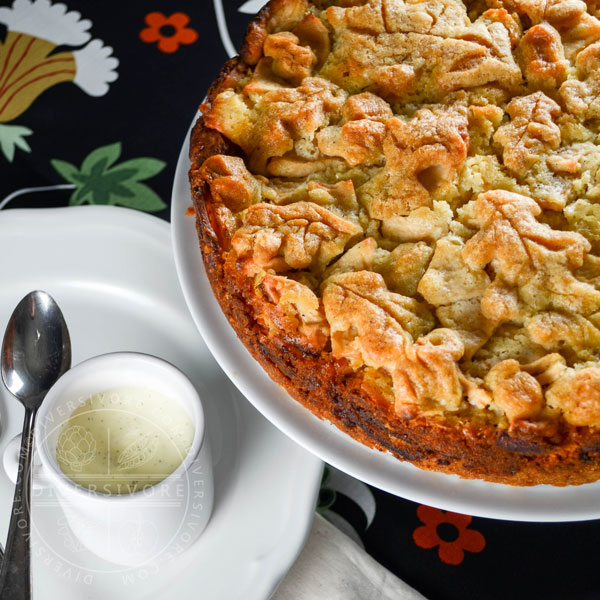
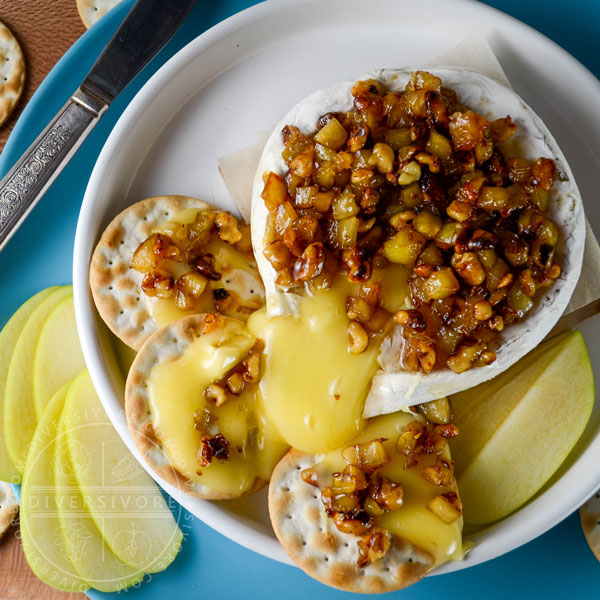
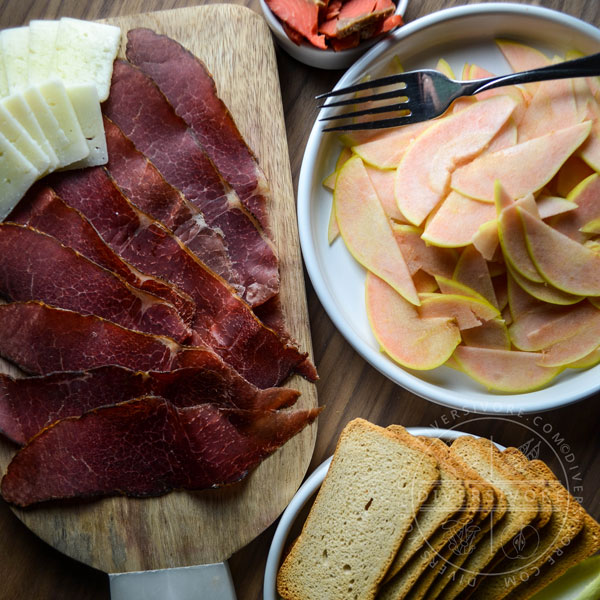

Comments
I thought I knew the local apple varieties but I have only heard of (and love) mutsu. I look forward to seeing your recipes for each. 🙂
One of the amazing things about apples, especially in North America, is how incredibly regional varieties can be. This isn’t seen at a commercial level any more, but many varieties are HIGHLY local. But there are literally thousands of varieties out there, so you can bet that there are always some new gems to discover! Cheers!
Wow, a great read! Some of these are familiar to me but I’ll have to keep a better eye out for something like an Ashmead’s Kernel. I’m always up for trying something new.
Thank you Heather! I love trying different types, and I’ve gotten wonderful feedback from readers who feel the same way. I can’t wait to share more in the future!
Wow ! Thanks for the tutorial on apples ! I have only heard of crispin out of the five ! Can’t wait for your other recipes to come out ! Your pastry tart looks amazingly ! And I totally agree on REAL butter puff pastry ! Taste so much better !
My pleasure Vicky! This is just a small handful of the many wonderful and underappreciated varieties out there. I can’t wait to expand this in the future!
(And yay for real-butter puff pastry!)
You picked some beautiful apples to showcase here! I’m looking forward to seeing all of your recipe posts. Autumn apples are such a treat.
Thank you Teresa! I didn’t fully appreciate them until I started seeing these in local markets and going to the UBC apple festival. Now I’ve got a greater appreciation for these unique varieties, and for the more common varieties on the market today.
Fantastic series, Sean! I love apples! Thanks you for your post! I am sure it will be very popular.
Thank you Denise! Glad you enjoyed it.
What a great resource you are compiling here – something to refer back to regularly for sure!
Thank you Cathy! I hope you and others will. I’ve had so much fun with this post, and I’d love to keep it going in the future.
I love this idea, Sean! Great work and I can’t wait to see the other posts in the series.
Thanks Alexandra! I hope you’ll come back for future installments too! 🙂
All of these apples are so beautiful. I especially love the first image of the ashmead’s kernel. I’d love to see some kind of pink pearl sparkly apple beverage (you can’t go wrong with pink and sparking, can you?) What a wonderful series Sean! I hadn’t heard of any of these apples before but I can’t wait to go looking for them now.
Thank you Brittany! I’m awfully partial to the Ashmead’s Kernel too. It browns quickly, but when you first cut into it it has such a gorgeous colour. And as for that sparkly pink beverage idea, you’re not alone! I’ve had multiple people comment and inquire about pink ciders. There might even be some interesting Canadian producers getting into the game over the next year or two. We can hope! 😀
I love your adventurous take on exploring all these underappreciated apple varieties. This makes me so happy. Your cliff-hanger images to your future recipes look so delicious, I can’t wait to see what they are! 🙂
Thanks Hilary! Now that they’re all up (I’m obviously behind on my comment replies), I hope you’ve enjoyed each recipe! I really enjoy doing features like this and I hope I can do more in the future with apples and other fruits and veggies!
Such a fun + educational compilation here! Bravo, mon ami. I’m really looking forward to seeing some of these recipes you’re teasing us with. Really looking forward to what this series brings and, of course, sharing it with my readership!
Merci! Glad it tickled your fancy. Or… polished your apple. Ok that sounds weird. Anyway, I’m glad you liked it, and thanks so much for sharing!
The pink apple is on my bucket list to try! Didn t know about most of those apples, But the pink one seems like coming right out from Alice in wonderland. There is quite a wide world around apples, thanks for opening the door to it for me!
I hope you can find some! The collection of pink apples (there are a handful of varieties) are very much a West-Coast phenomenon – they were developed here, and they grow well here. I hope you can track some down at some point! I totally know what you mean though – when you start learning about the diversity out there you can’t help but wonder what else there is to see!
This was a delightful read. I agree that russet varieties should get more credit – they may not be the prettiest but they have the best flavor and texture. I avoid buying overly shiny, hard, red apples like red delicious because they disappoint me 99% of the time. It’s also just nice to see something different in the grocery store and not the same boring varieties that are always there.
I’m happy to sing the praises of russets far and wide! Shiny unblemished apples have more to do with wax and aesthetics than they do with flavour anyway! We all need to get out there and advocate for flavour and diversity!
I’ve really been loving this series, Sean! I’m looking at apples in a whole new light, now. Yesterday I found some SweeTango apples and had never seen them before — they were delicious! I will continue my hunt for unique apple varieties here in Calgary and be sure to let you know when I find something cool. 🙂
Thank you so much Justine! I’m really glad to hear that. I haven’t tried the SweeTango yet (apparently Honeycrisp is one of its parents, which is interesting), but it was developed by the University of Minnesota, and they have a long history with developing some great American apples. Given that they’re patented, the distribution tends to be a little more predictable and commercial, but it’s still great to know that these new varieties have a market demand. I’d love to see more new ones… and more old ones!
I eagerly await your apple discoveries in Calgary!